Streetlight Colour and Safety: Do Purple Streetlights Reduce Visibility?
Grade 7
Presentation
No video provided
Hypothesis
Problem
Hypothesis
If people are asked to read standard Snellen eye charts from 20 feet away under a purple light and then again under a white light, then they will correctly identify more letters on an eye chart under white light rather than purple light because cone photoreceptors in the human eye function best in bright well lit conditions, and are effective in distinguishing fine details. Although rod photoreceptors help with low light and peripheral vision, they are less effective in seeing small details. Also, since white light contains all wavelengths on the visible light spectrum and blue and purple have the shortest wavelengths, it is expected that letter recognition will be better under white light than blue light.
Research
Primary Research
I stood under 30 streetlights at night and measured the lux with my digital light meter to find out the average so I'd know what lux to set my lamp to in the experiments:
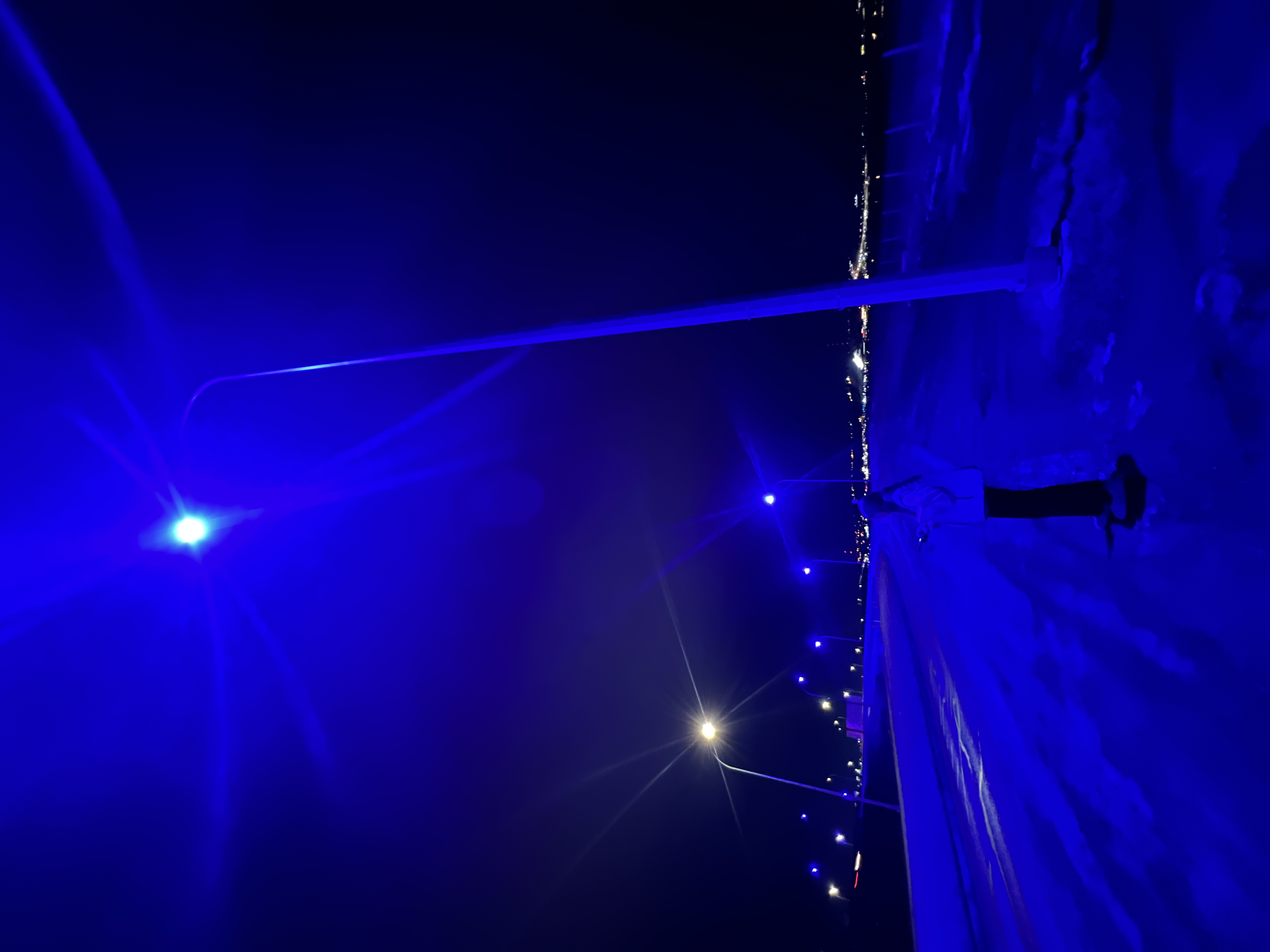
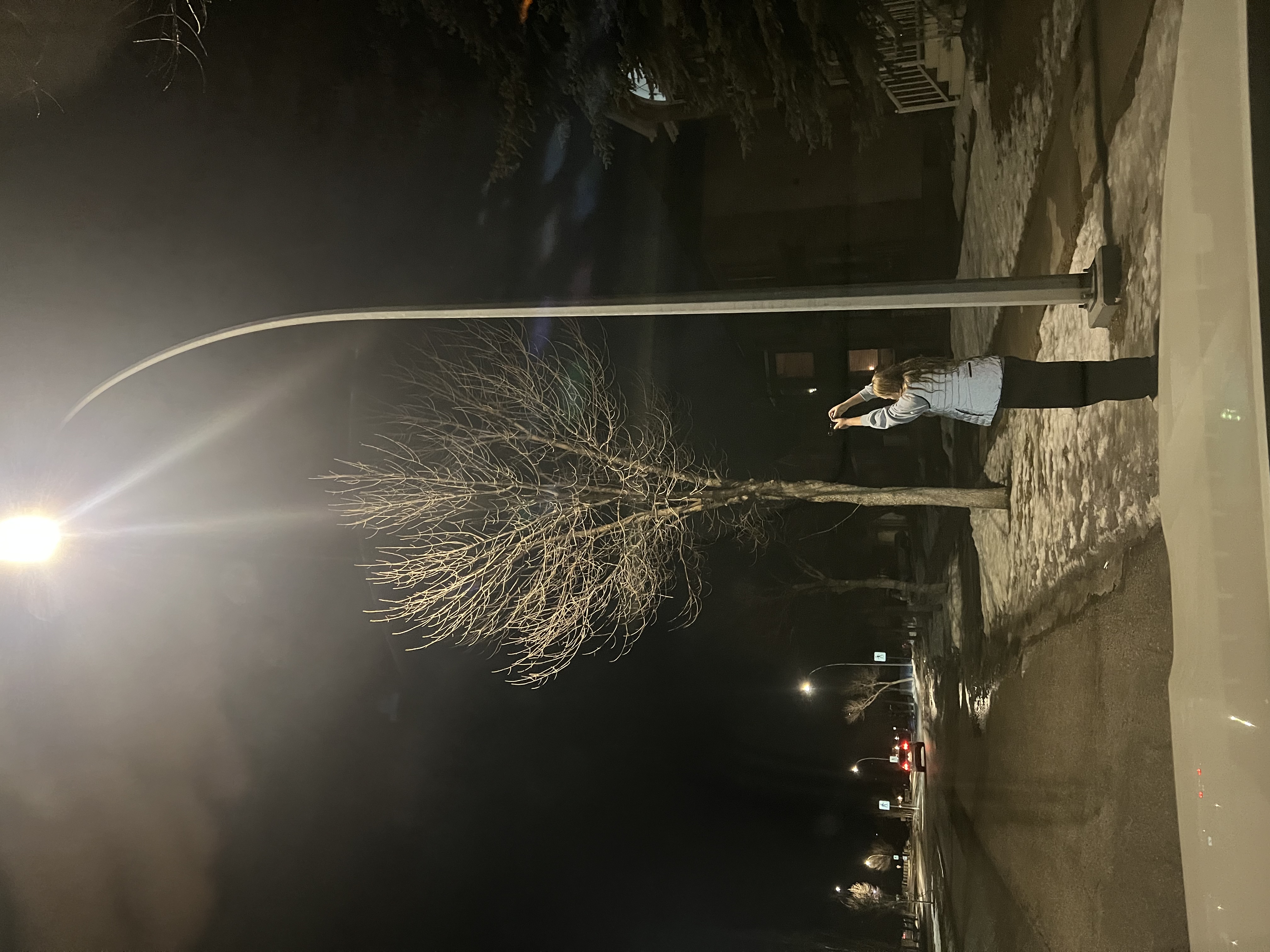


The average lux was 19.
Background Research
1. According to the following article from 2023 in Scientific American,
https://www.scientificamerican.com/article/streetlights-are-mysteriously-turning-purple-heres-why/:
LEDs-most energy efficient, durable and long-lasting form of lighting.
It is possible that the amount of light is diminished when it becomes purple.
Lighting colour
- how to create white light= 1, you use a mix of tiny leds coloured blue, yellow and red or blue, green and red into a single large device.
- 2, you use only blue leds and coat them in a fluorescent substance called phosphor. This phosphor absorbs some of the blue wavelengths and creates red and yellow ones.
Why method 2 is more popular
- It takes more energy to have red and yellow LEDs than it does to use blue ones.
- It requires more circuitry to have the red blue and yellow then to just have blue and that makes option one more expensive.
Why is it blue/purple?
- Scientists suspect that the layer of phosphor has peeled off exposing the blue leds underneath
- It could be anything that caused this, gravity, heat buildup, or even the vibrations from passing cars.
Your eyesight in different lighting conditions
- Cone shaped photoreceptors are in use when in daylight letting people see colors easier
- In low light conditions rod like ones are used, these are mostly in the peripheral part of your retina so people driving at night will notice something in their peripheral vision faster. However, once the thing comes into focus it is harder to see for the lack of dark photoreceptors in the middle of the eye.
2. According to the following article from 2023 CBC, https://www.cbc.ca/news/canada/calgary/blue-street-lights-calgary-1.7027109
- The temperature (heat) can crack the phosphor coating.
- It triggers some people’s epilepsy
- There are many concerns about visibility and safety when driving and walking down purple light roads. But no research is mentioned.
3. According to the following article from Heath Alberta 2023,
- A far distance eye test is called a Snellen chart.
- It is placed 6 m (20 ft) away from the patient at an eye doctor's office.
- The largest letters are placed at the top of the board and the smallest at the bottom.
- It is an older version of eye exams
4. According to the American Academy of Ophthalmology, https://www.aao.org/eye-health/tips-prevention/eye-chart-facts-history
-an eye chart measures your visual sharpness
-20/20 vision=normal vision
-a vision testing chart (with pictures) is used for children or people who can’t read
Snellen chart
-snellen chart most common
-there are 11 lines of letters known as the optotypes
-the lower in the page the smaller and more letters there are
-you stand 20 feet away from the snellen chart
-uses to measure visual acuity
-you read letters row by row until you can’t make them out
-uses serifs
5. According to Seeing
-your eyes only see red blue and green
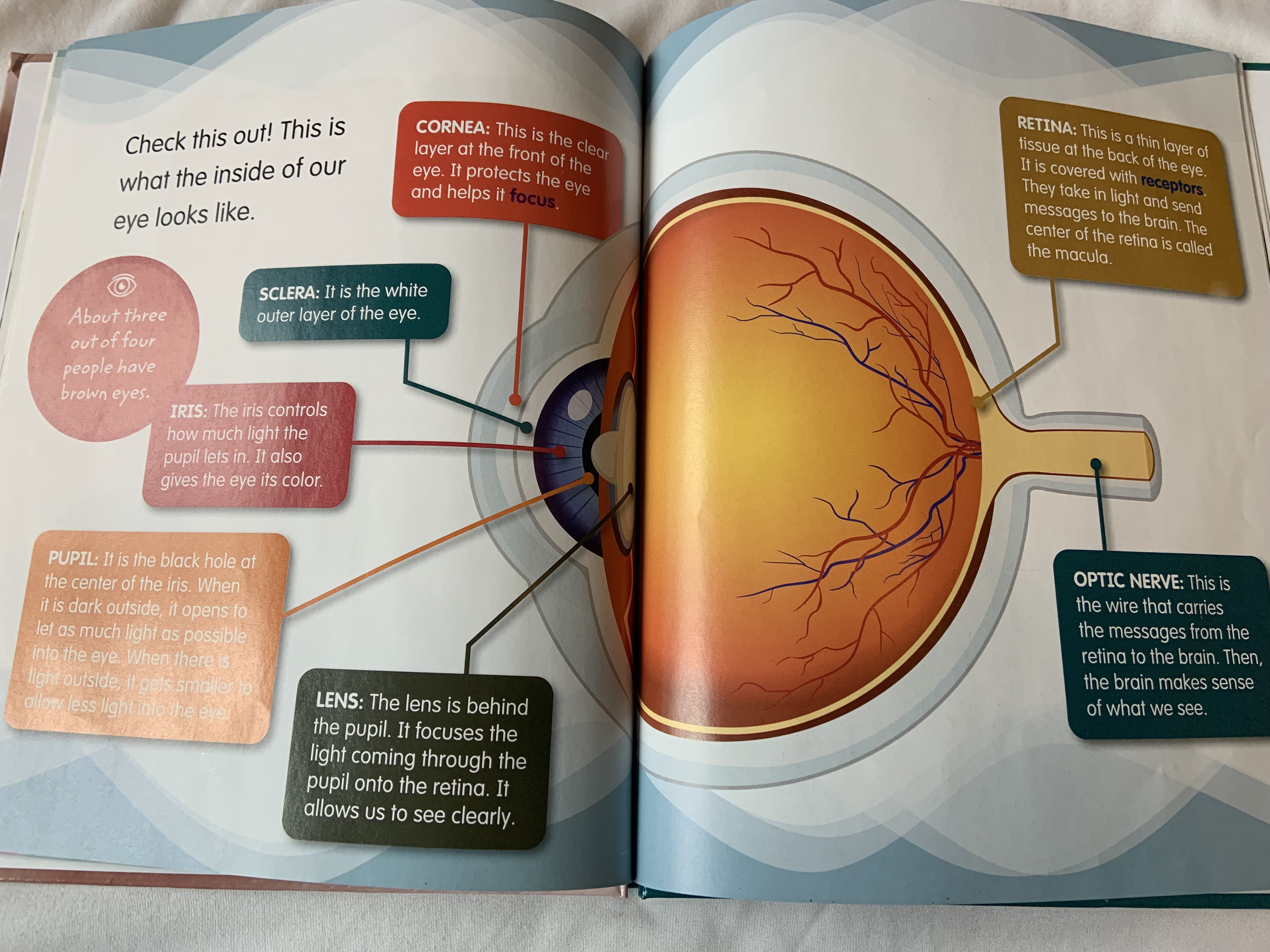
6. According to The Eyes Have It
- You see images upside down then your brain changes them to rightside up
-70-80 percent of the information you gather is from your eyes
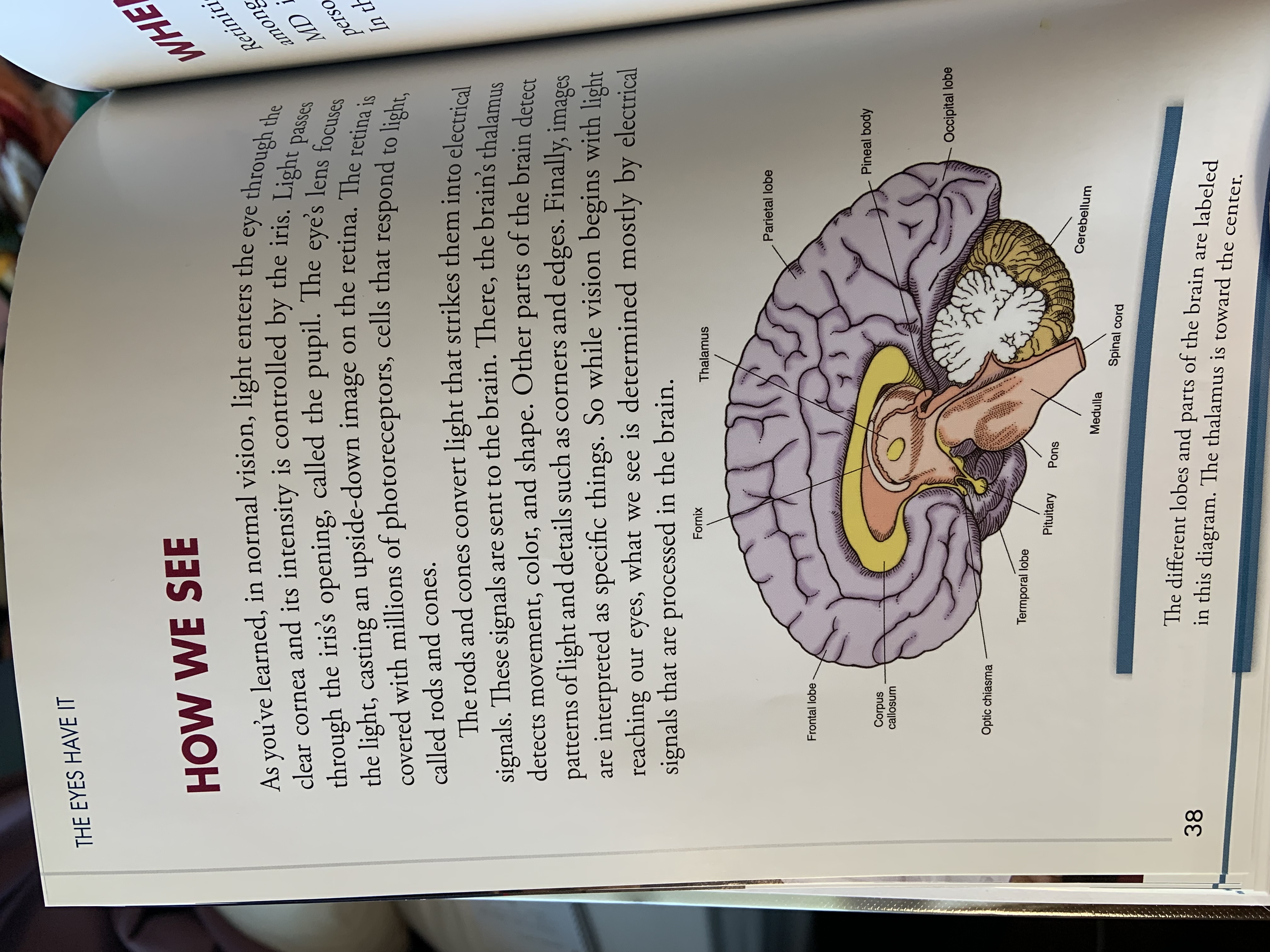
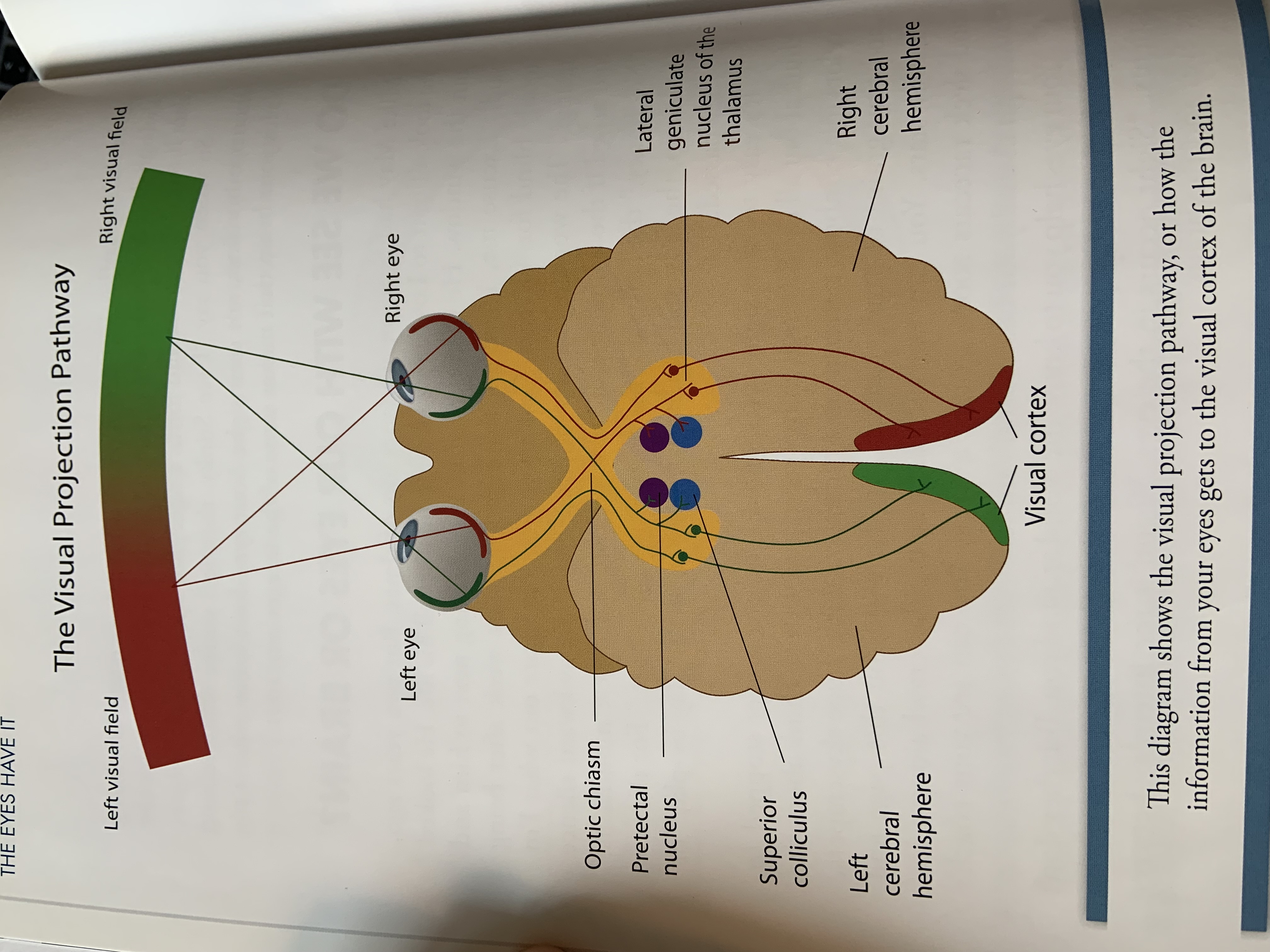
-cone photoreceptors are better in daylight
-peripheral vision is better at noticing shapes and shadows
-quick small eye movements called saccades to see everything clearly

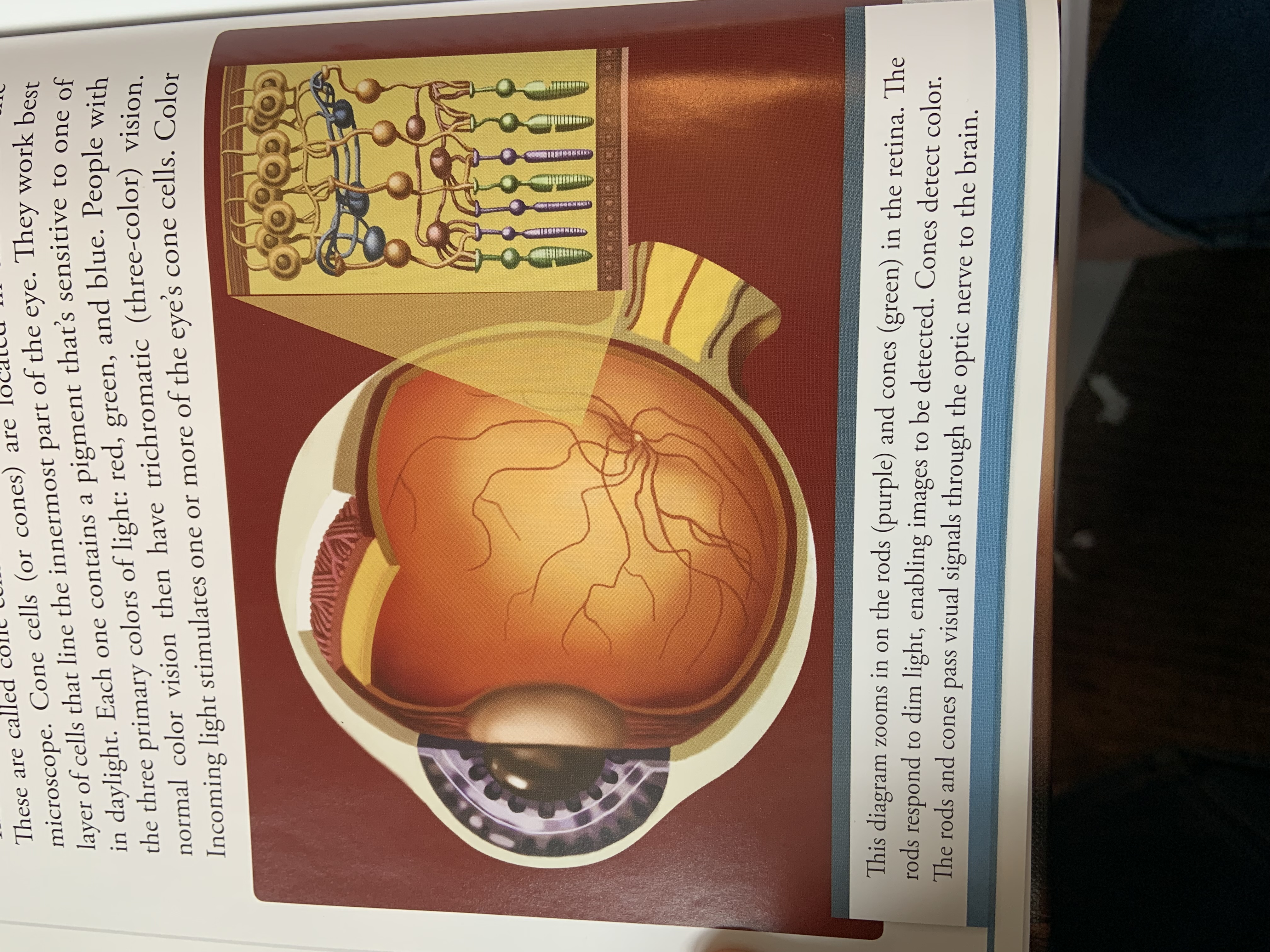
-fovea = 1 percent of our visual field but it provides 50 percent of information from eyes
-peripheral is best for shadows and figures and center is best for detail
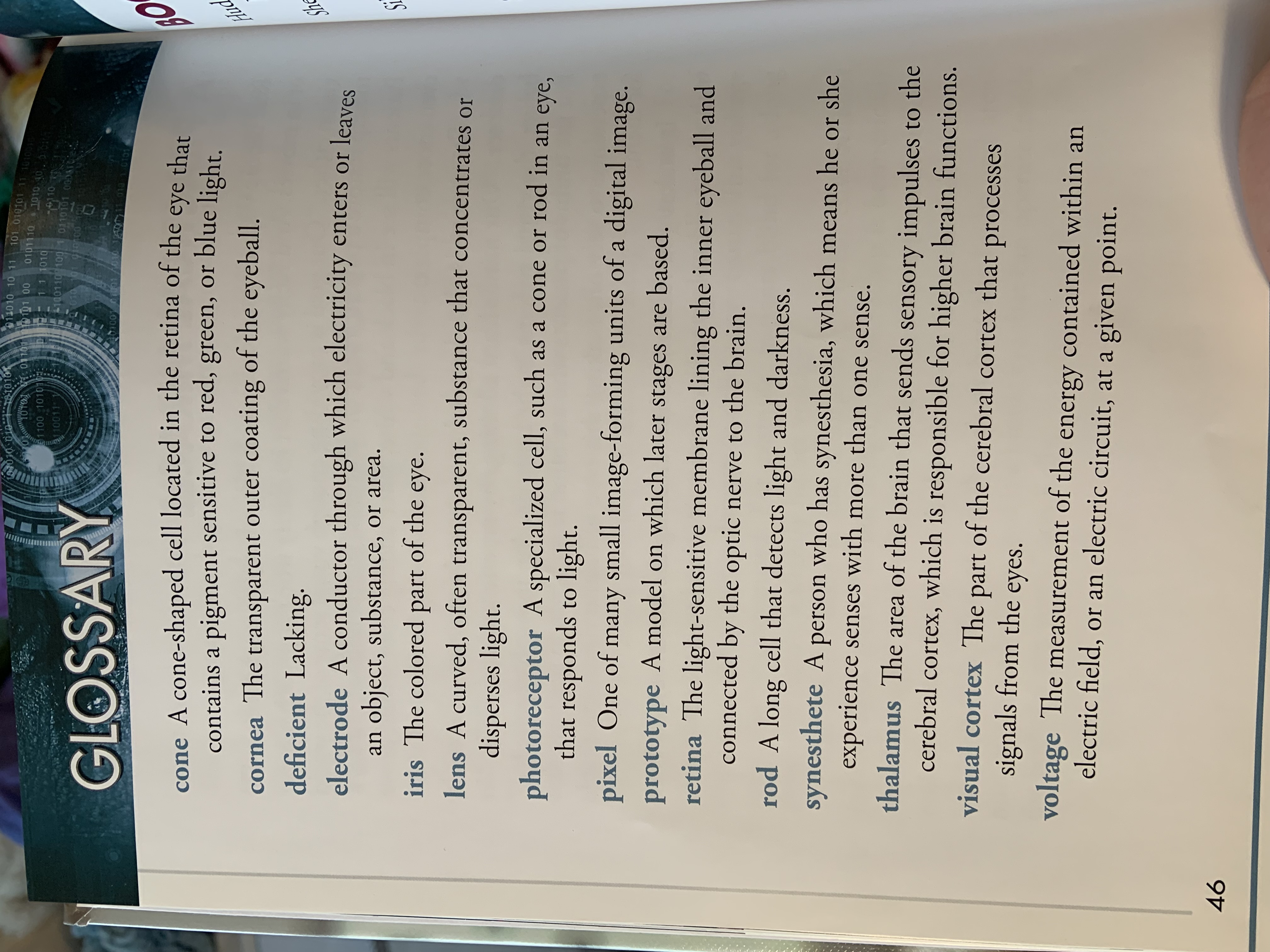
7. According to Science Learning Hub
https://www.sciencelearn.org.nz/resources/47-colours-of-light
White light is made up of all the visible wavelengths (roughly 400-700 nanometers), while purple light has the shortest wavelengths, around 380-450 nm.
The NASA website had useful information about visible light too http://science.nasa.gov/ems/09_visiblelight
Variables
Independent Variables
-
Light colours (purple or white)
Dependent Variables
- Numbers of letters identified correctly
Controlled Variables
- Light in testing environment (0 lux)
- Lamp lux (15)
- Distance from the eye chart (20 ft)
- Same lamp
- Snellen eye chart
Procedure
Materials
- dimmable colour changing lamp
- painters tape
- measuring tape
- 2 Snellen eye charts with different order of letters for 20 foot distance
- digital light meter
- pencil and datasheet to record data
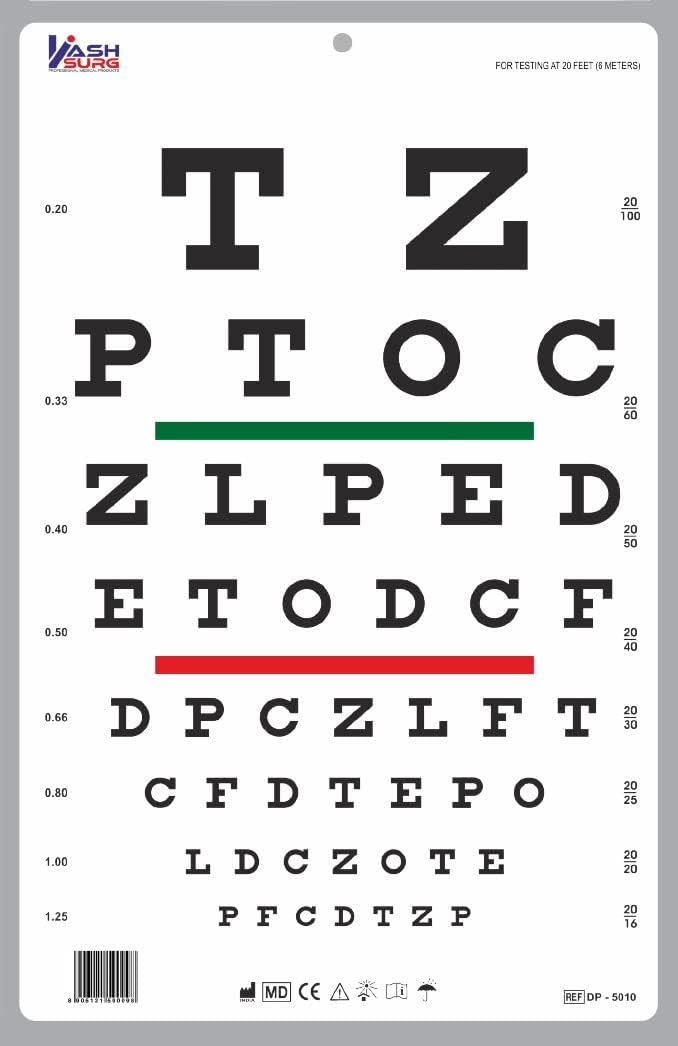
Procedure
- All eye exams must be completed in a location that is completely dark (windowless room) and is at least 20 feet long. Exams were completed in residential garages and basements.
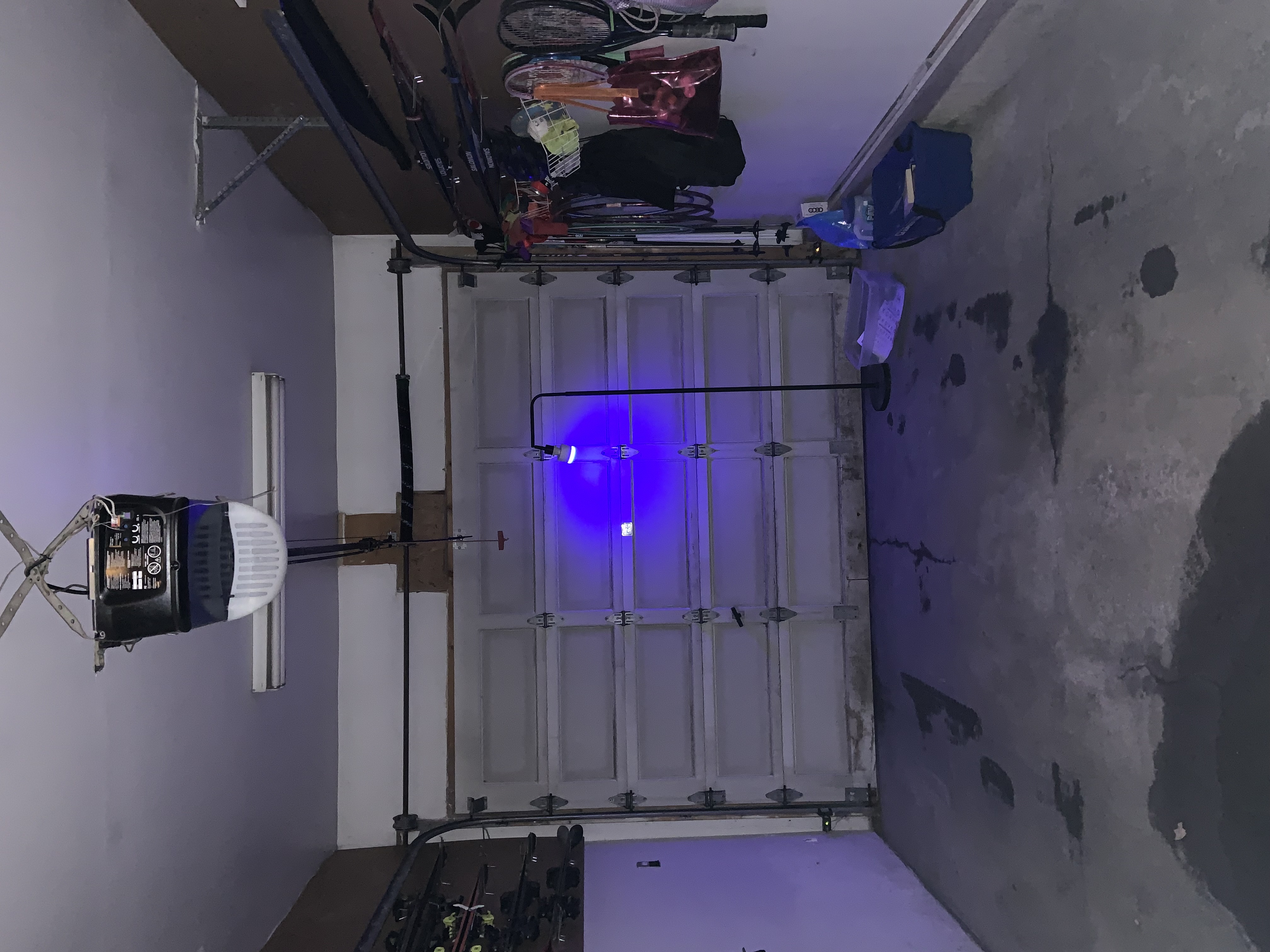
Setup
- Measure 20 feet from wall
- Set up lamp
- Turn off room light and confirm 0 Lux in the room
- Turn on lamp to blue/purple light
- Test the lux of coloured light with light meter and adjust to 19 lux
- Tape eye chart under light
- Get participant to enter room
Eye Test
- Ask participant personal details such as age, gender, if they are colour blind, and whether or not they are using eye correction (glasses/contacts)
- Ask participant to read the eye chart from the top row and stop when they can't identify any more letters
- Record the number of letters correctly identified
- Change the colour of the lamp from purple/blue to white
- Test the lux of the white lamp and adjust to 19 lux
- Tape a new eye chart on the wall
- Ask participant to read the new eye chart from top to bottom as far as they can
- Record the number of letters correctly identified
- Thank respondents for participating
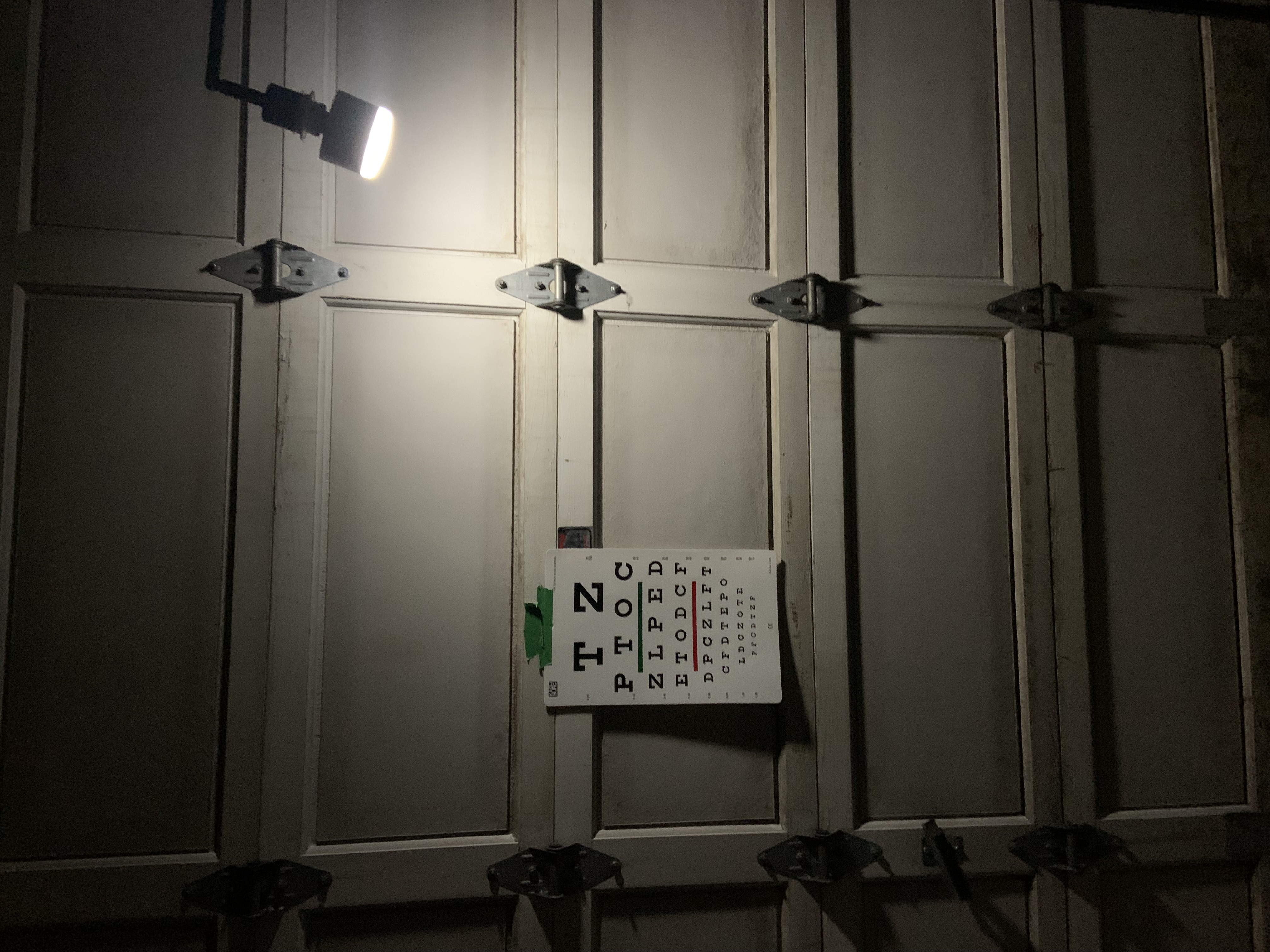

Observations
Data Collection Sheet
I completed 31 eye tests to determine if there is a difference in visibility between purple and white lights in a dark environment. Here are the results of the eye tests:
| Age | Gender | Eye Correction | Colour Blindness | Purple: # of Letters | White: # of Letters |
| 48 | F | Yes | No | 10 | 45 |
| 49 | F | No | No | 0 | 17 |
| 49 | M | No | No | 6 | 37 |
| 18 | F | No | No | 4 | 22 |
| 15 | F | No | No | 15 | 41 |
| 44 | F | Yes | No | 8 | 36 |
| 75 | M | No | No | 8 | 28 |
| 76 | F | Yes | No | 2 | 12 |
| 48 | M | No | No | 19 | 38 |
| 14 | M | No | No | 8 | 16 |
| 16 | M | No | No | 20 | 24 |
| 49 | F | Yes | No | 13 | 36 |
| 46 | F | Yes | No | 2 | 30 |
| 47 | M | No | No | 3 | 21 |
| 61 | F | Yes | No | 13 | 21 |
| 14 | F | No | No | 23 | 31 |
| 70 | F | Yes | No | 15 | 25 |
| 25 | F | Yes | No | 14 | 27 |
| 60 | M | Yes | No | 20 | 34 |
| 7 | F | No | No | 9 | 31 |
| 48 | F | No | No | 17 | 22 |
| 59 | F | Yes | No | 17 | 23 |
| 15 | M | No | No | 23 | 36 |
| 15 | M | Yes | Yes | 17 | 30 |
| 54 | F | No | No | 24 | 39 |
| 52 | F | Yes | No | 27 | 44 |
| 14 | M | No | No | 20 | 38 |
| 49 | M | No | No | 21 | 44 |
| 48 | F | Yes | No | 22 | 42 |
| 16 | F | No | No | 14 | 42 |
| 13 | F | Yes | No | 0 | 9 |

I found that the amount of letters identified correctly was greater with white lights than with purple ones.
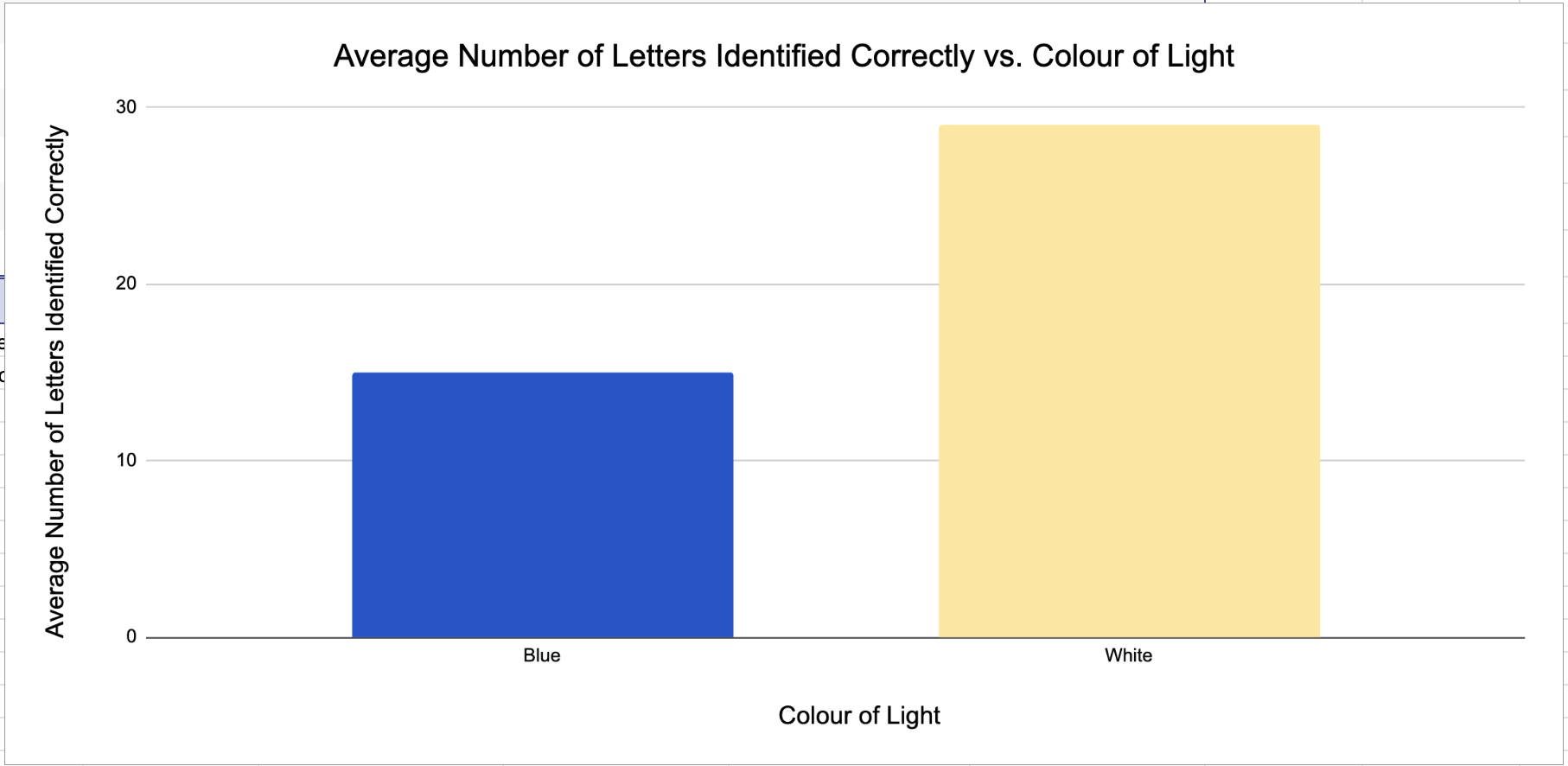
Analysis
Vision and White Versus Purple Light
As you can see from the box chart below, the number of letters recognized under white light is much higher than purple light.

Source: I used an AI tool to create this box chart because Google Sheets doesn't make box charts.
- Participants recognized an average of 30.35 letters under white light and only 13.35 letters under purple light.
- The number of purple letters reognized ranged from 0 to 27 out of 45 letters on the charts with a median around 13.
- The number of white letters recognized ranged from 9 to 45 out of 45 letters on the charts with a median around 30.
- Some people couldn't recognize any letters under the purple light compared to nine letters being the lowest number of letters identified under the white light.
Age
- The age range of participants is 7 to 76.
- Older participants scored lower than younger participants.
|
Age Group |
Purple Light Average |
White Light Average |
|
Under 18 |
14.9 |
29.8 |
|
18-59 |
12.94 |
32.69 |
|
60+ |
11.6 |
24.0 |
Gender
- There were 20 females that particpated and 11 males.
- Females scored slightly lower than males, but gender did not have a major impact on the results.
| Gender | Purple Light Average | White Light Average |
| Male | 15 | 31.45 |
| Female | 12.45 | 29.75 |
Eye Correction (Glasses or Contacts)
- There were 17 participants without any eye correction, and 14 wearing glasses or contacts.
- Eye correction didn't seem to make a difference in the eye exam results, so the difference in visibility between white and purple lights probably has to do with how the human eye perceives light and not individual vision problems.
| Eye Correction | Purple Light Average | White Light Average |
| Yes | 13.78 | 30.78 |
| No | 13.08 | 29.92 |
I only had one participant with colour blindness so I don't have enough information to know if that would make a difference. That person's results were similar to everyone else's.
Conclusion
This experiment confirms my hypothesis that more letters can be correctly identified on an eye chart under white light than purple light and proves that lighting conditions impact human vision. Cone photoreceptors in the human eye function best in bright well lit conditions and are effective in distinguishing fine details. Also since white light contains all wavelengths on the visible light spectrum and blue and purple have the shortest wavelengths, letter recognition was better under white light than blue light as expected.
My original question was whether or not purple/blue streetlights reduce visibility. My results show that white light provides better visibility and that the blue/purple light reduce svisibility, so I hope these findings can be used to improve safety on streets at night by encouraging cities in North America to replace or fix the faulty streetlights that have been malfunctioning since at least 2021. I also think my findings can be applied to schools and workplaces, and in places where eye exams are conducted as it's important to make sure people have enough white light to be able to see properly.
Application
My experiment examined how well participants recognize letters on an eye chart under white light versus purple light. Everyone could identify more letters under white light than purple light which suggests white light provides better visibility than purple light.
Driving and Street Safety
If purple or blue tinted lights reduce visibility, they might make it harder for drivers to read signs or see pedestrians at night. This research suggests the faulty blue/purple streetlights should probably be repaired or replaced.
Vision Testing
Since eye exam results change depending on the lighting, optometrists should make sure their lighting is good for eye exams.
School & Work
If lighting affects people's ability to read, coloured lights might make it difficult for some people to learn or do their work. Schools and workplaces should make sure they provide good lighting.
Sources Of Error
To make this project better I would have had more people do the eye test to make the results more accurate.
My experiment could be better if I had:
- a wider variety of ages
- the same amount of female and male participants
- the same amount of people with eye correction and without
- more colour blind people.
I also think it would have been good to interview an eye professional, like an optometrist before I started doing my research and creating my hypothesis. Interviewing someone responsible for street lighting would have also been helpful.
These improvements would provide a better understanding of why visibility is reduced under purple/blue lights and give a more accurate conclusion.
Citations
Citations
Alberta Heath Services. 5. “Vision Tests.” MyHealth Alberta. https://myhealth.alberta.ca/Health/tests-treatments/Pages/conditions.aspx?hwid=hw235693.
Katz, Susan B. 2023. Seeing. N.p.: Scholastic Incorporated.
Kwon, Karen, and Sophie Bushwick. 2023. “Streetlights Are Mysteriously Turning Purple. Here's Why.” Scientific American.
https://www.scientificamerican.com/article/streetlights-are-mysteriously-turning-purple-heres-why/.
Nassau, Kurt. 2025. “Color.” Britannica. https://www.britannica.com/science/color#ref21836.
National Aeronautics and Space Administration. 2010. “Visible Light.” NASA. http://science.nasa.gov/ems/09_visiblelight.
Randolph, Joanne, ed. 2017. The Eyes Have It. N.p.: Enslow Publishing, LLC.
Ritter, Bob, Kim Burley, and Douglas Fraser. 2006. “14.2 The Structure of an Eye.” In Nelson Biology, Alberta 20-30, 446-455. Toronto: Nelson Education Limited.
Vimont, Celia. 2024. “All About the Eye Chart.” American Academy of Ophthalmology. https://www.aao.org/eye-health/tips-prevention/eye-chart-facts-history.
Zapata, Karina, and Joan Donaldson. 2023. “Dozens of street lights on 2 major Calgary roads are turning blue (or purple).” CBC.
https://www.cbc.ca/news/canada/calgary/blue-street-lights-calgary-1.7027109.
Acknowledgement
I want to thank my mom for buying me the supplies for this project, driving me around to people's houses to conduct my eye exams and teaching me how to use formulas that calculate the averages in Google Sheets.
Thank you to the Calgary French & International School science fair coordinator, Mme Stephanie Couture, for checking in and keeping me on track. It is nice to be able to enter the science fair with my school this year.

